Editor’s Note: Every month, DX Engineering features QSL cards from our team members’ personal collections. To highlight upcoming DXpeditions, we’ll be displaying a few of our favorite cards along with details about what it took to make these contacts. We’re excited to share some of the special cards pulled from the thousands we’ve received over the years. We look forward to seeing your cards as well!
Northern Mariana Islands QRV in October
The Mariana Islands, an archipelago comprised of the summits of 15 volcanic mountains in the western North Pacific Ocean south-southeast of Japan, is scheduled to be active until October 13 thanks to the AH0/WA7WJR DXpedition from Rota Island. In addition to being on the HF bands in CW, WA7WJR will be attempting to activate the Parks on the Air (POTA) locations K-9713 through K-9716.
Named after Spanish queen Mariana of Austria, the Mariana Islands (IOTA OC-086) are divided into two political jurisdictions—the U.S. Commonwealth of the Northern Mariana Islands and, to the south, the U.S. territory of Guam (a possession of the U.S. since 1898). Guam (KH2) is a separate DXCC entity from the Mariana Islands (KH0). In recent years, hams have been working to revive interest in amateur radio in the Mariana Islands.
Rota Island (12.3 miles long, 4.2 miles wide), also known as the “Friendly Island,” is part of the Northern Mariana Islands and has a population close to 2,000—the least populated of the group, ranking below Saipan, 43,000, and Tinian, 3,100. The remainder of the archipelago’s islands are uninhabited.
Endemic and endangered animals on Rota include the Rota white-eye bird, Mariana fruit bat, and Mariana Crow, which is declining in numbers on Rota due to a number of natural and manmade factors. One of the crow’s most daunting foes is the brown tree snake, an invasive species known for extirpating large bird populations on Guam.
The island chain saw major fighting in World War II, as Guam was captured by the Japanese in a campaign that began on the day of the attack on Pearl Harbor. In 1944, the U.S. captured the Mariana Islands from Japan and, a month later, recaptured Guam—both victories of strategic importance, particularly on the islands of Tinian and Saipan.
While not part of the electoral voting process for President of the United States, the Northern Mariana Islands do hold primary voting events. Senator Bernie Sanders won the Democratic caucus in 2020, and the Marianas Republican Party supported Donald Trump. Like citizens of the Northern Mariana Islands, Guamanians may not vote in the general elections for President, but Guam does have a delegate in the U.S. House of Representatives who can vote on procedural matters and in committee but not on the House floor. Guam’s current delegate to the U.S. House of Representatives is Michael Franklin Quitugua San Nicolas.
As of September, the Northern Mariana Islands ranked as the 162nd Most-Wanted DXCC Entity per Clublog. Guam sits at 207th on the list.
QSL Cards
The active hams at DX Engineering have had great success contacting the Mariana Islands over the years (a good reason to contact them for help with your gear if you’d like to do the same). Here are a few of the QSL cards from their collections.
Mark, W8BBQ, DX Engineering customer/technical support specialist, made contact with the Saipan BBQ Contest Club, AH0BT, from 2010-12 on 17M CW and 20/17/15/10M SSB. The largest of the Northern Mariana Islands, Saipan was captured by Japan in World War I in 1914. The League of Nations awarded formal control of the island to Japan in 1919. The 46-square-mile island was the site of numerous sugarcane plantations after the war.
A number of wild-growing plants are found on Saipan, including coconut and papaya trees, and the Thai hot pepper (also called the “Bird’s Eye Chili”), which measures 50,ooo to 100,000 Scoville heat units. On the flaming-mouth scale, that places it between a tabasco pepper and the low end of a habanero chili—far below the decidedly less palatable Carolina Reaper (1,500,000+ heat units), which ranks as the Guinness World Record’s hottest pepper on Earth.
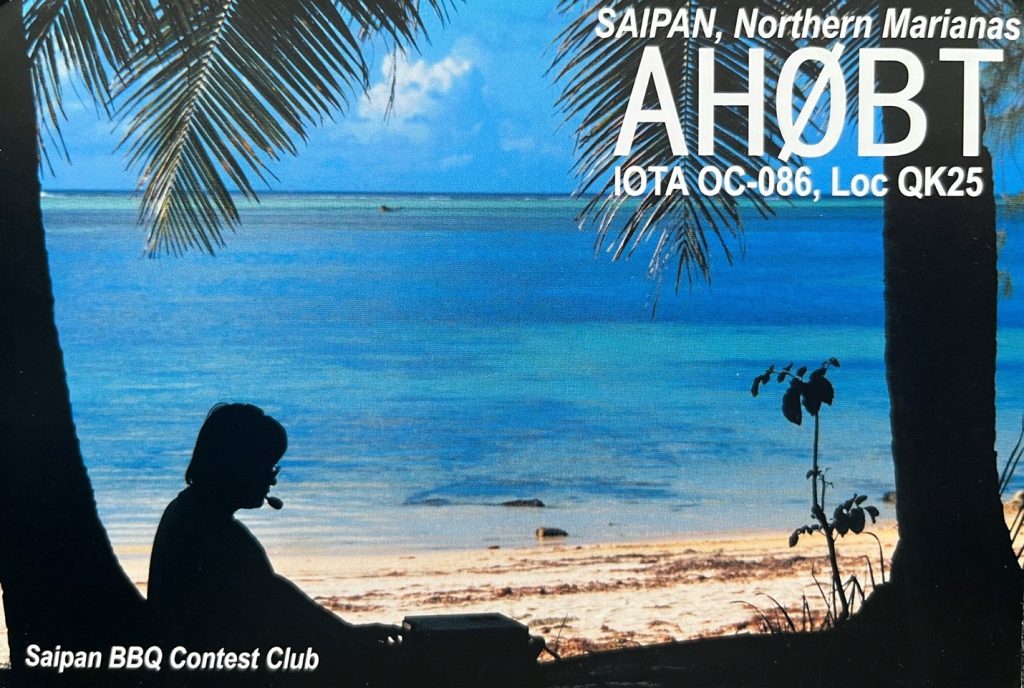
Tom, KB8UUZ, DX Engineering technical writer, reached both the BBQ Contest Club, AH0BT, and AH0/N0AT during the CQ World Wide SSB DX Contest in 2012—both operating from Saipan.
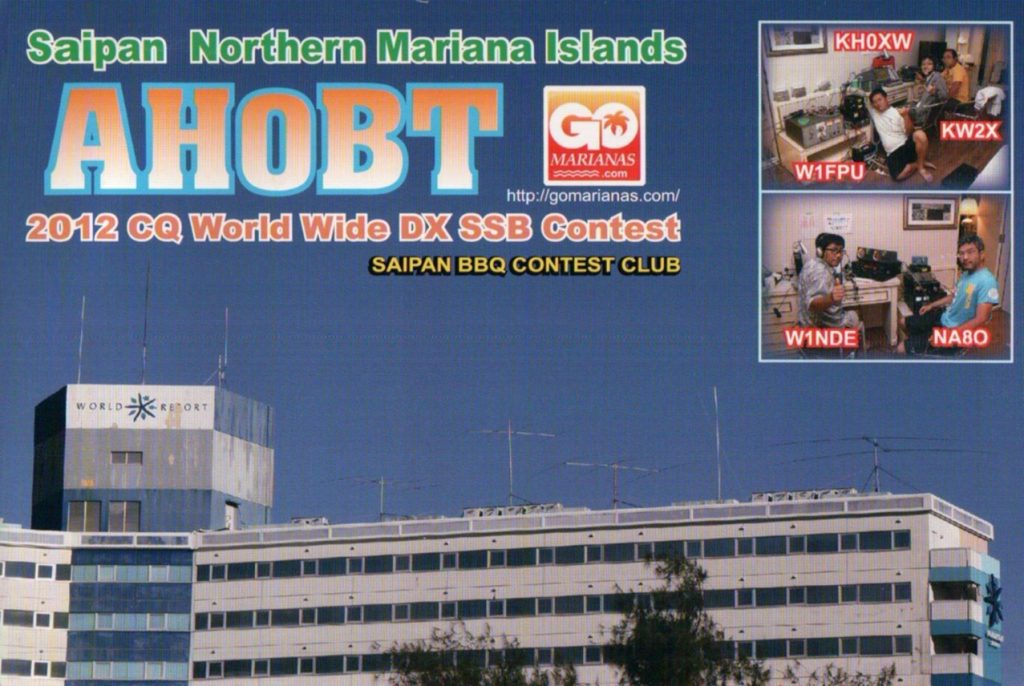
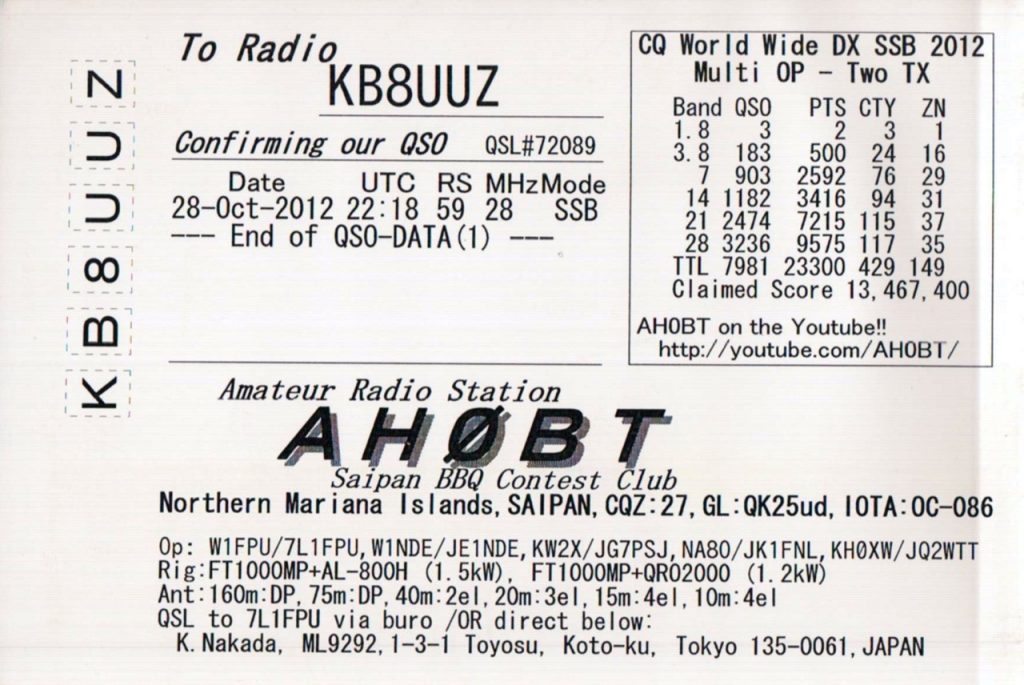
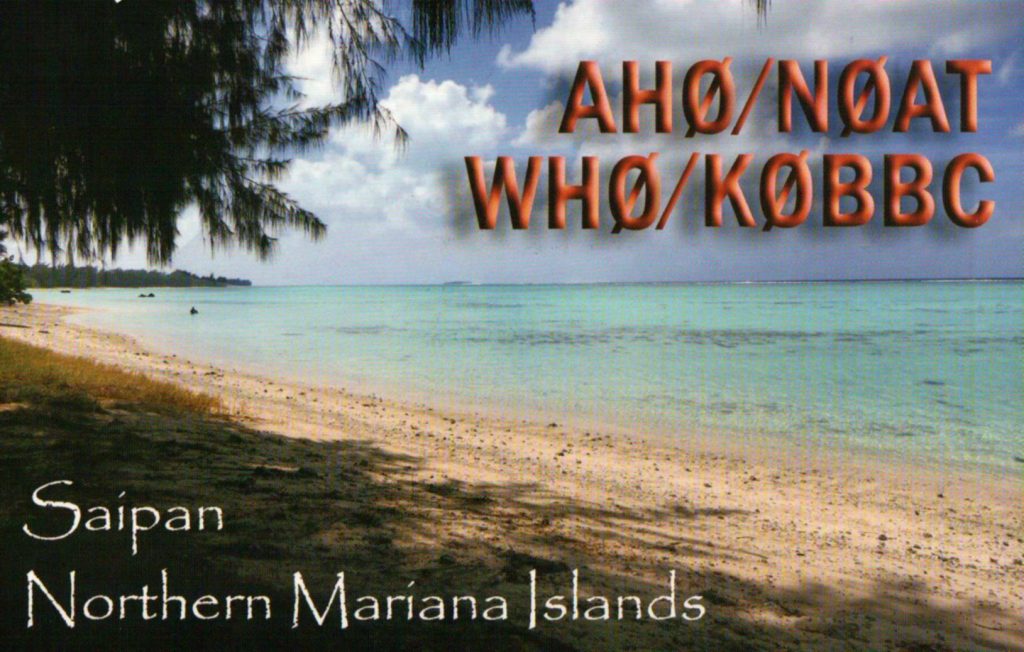
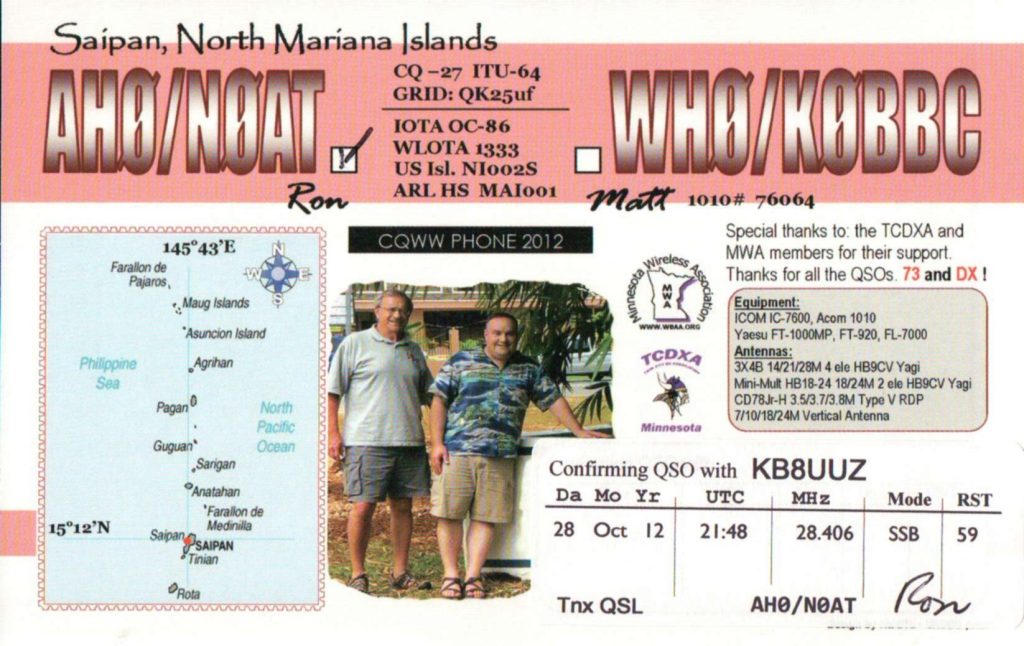
George, K3GP, DX Engineering customer/technical support specialist, pulled these QSL cards from his collection: KH0/JJ2NYT, August 2000, and KH0/JH8KYU, September 2000.
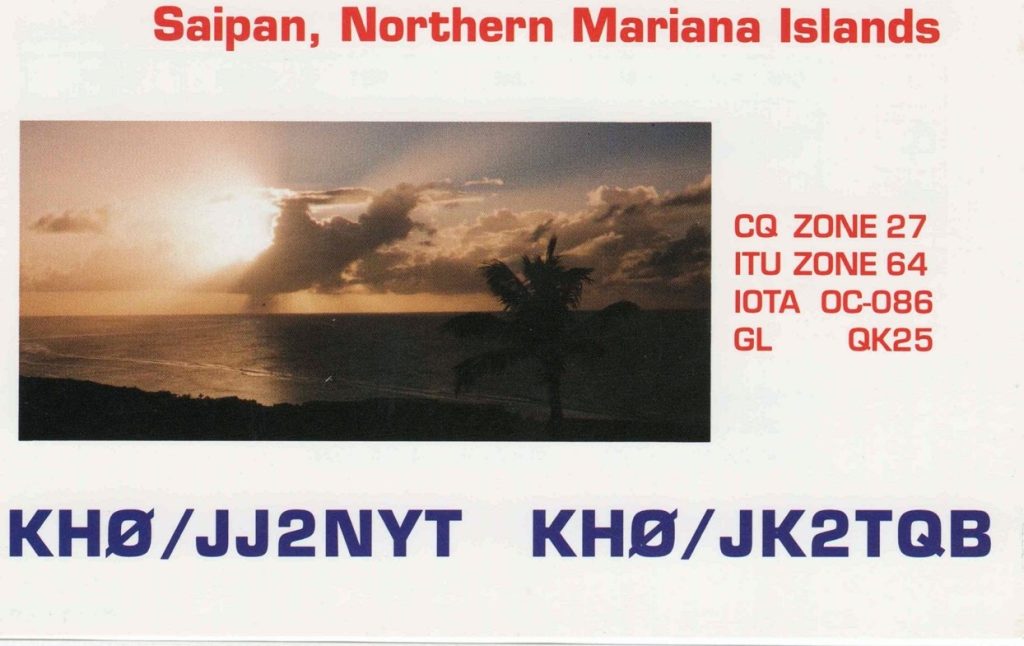
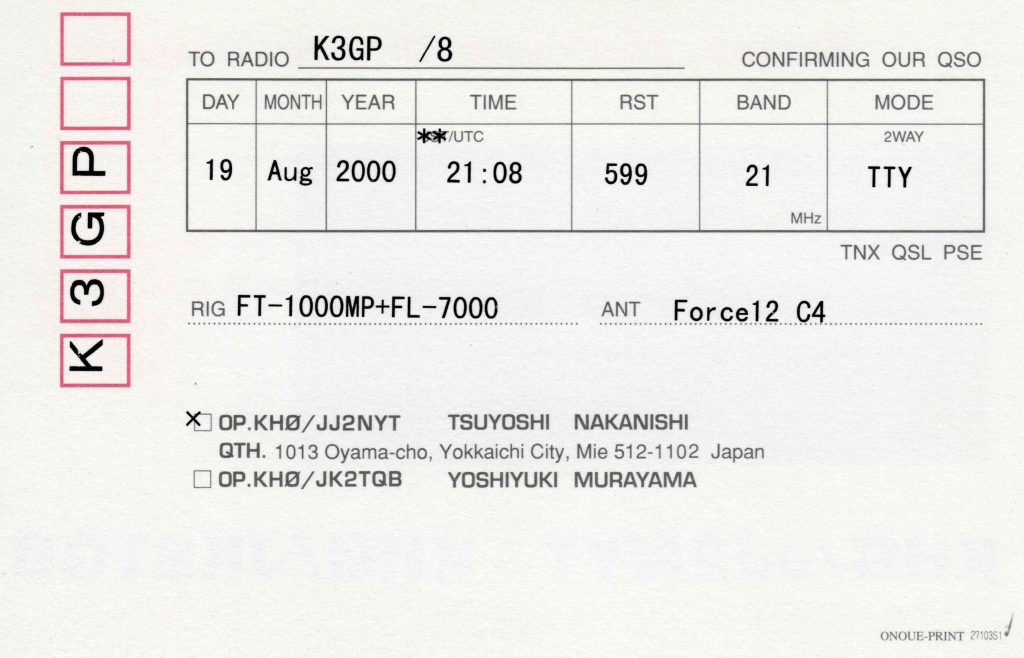
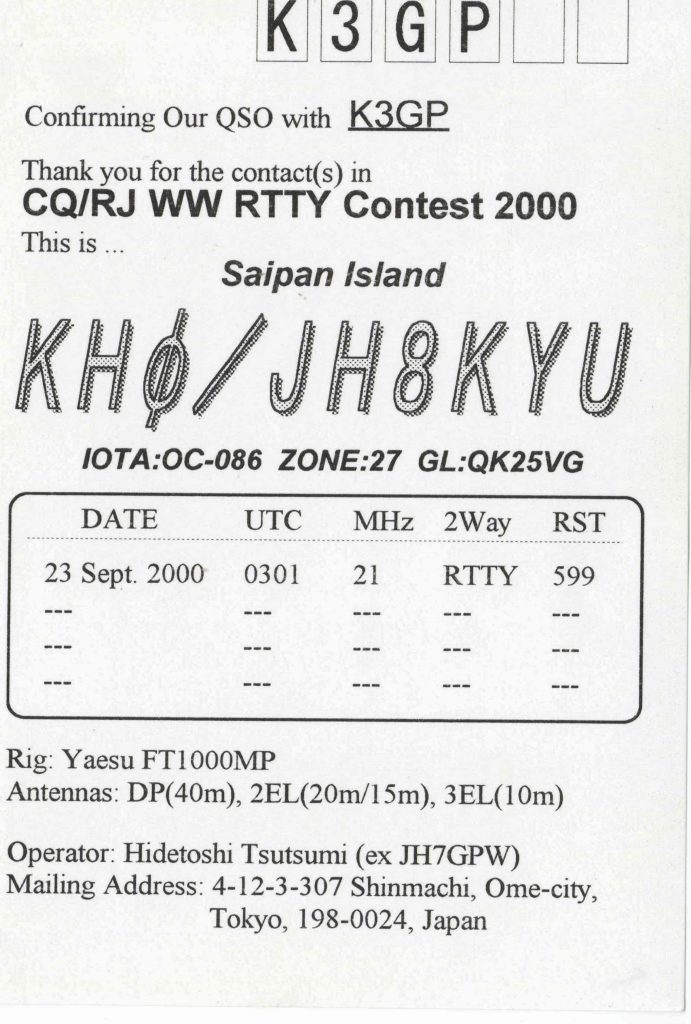
Scott, N3RA, DX Engineering sales manager, received these QSL cards from W3STX and AH0DX.
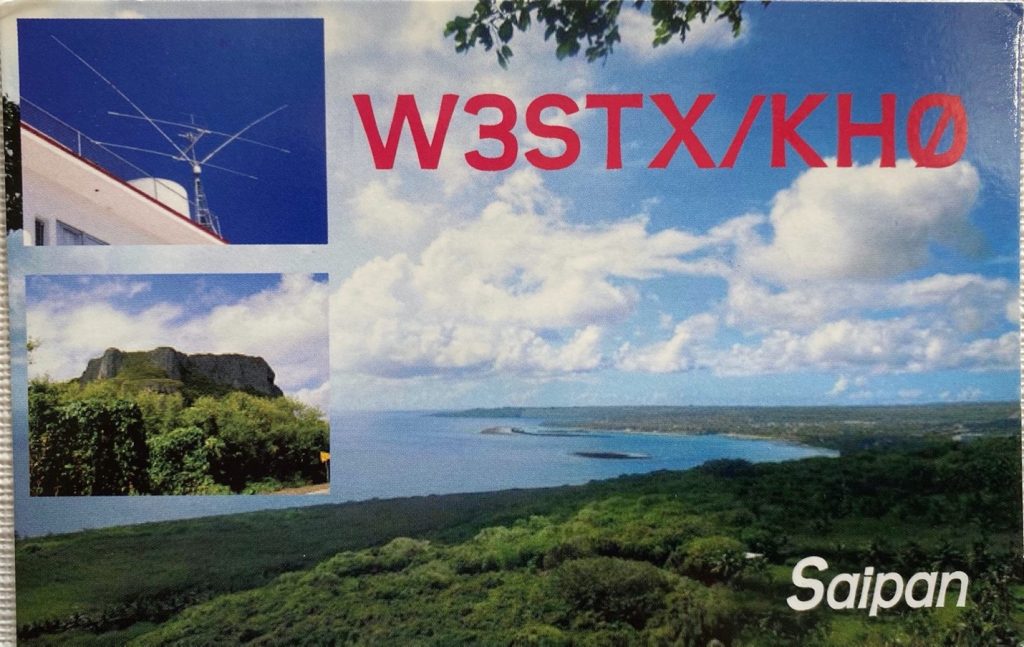
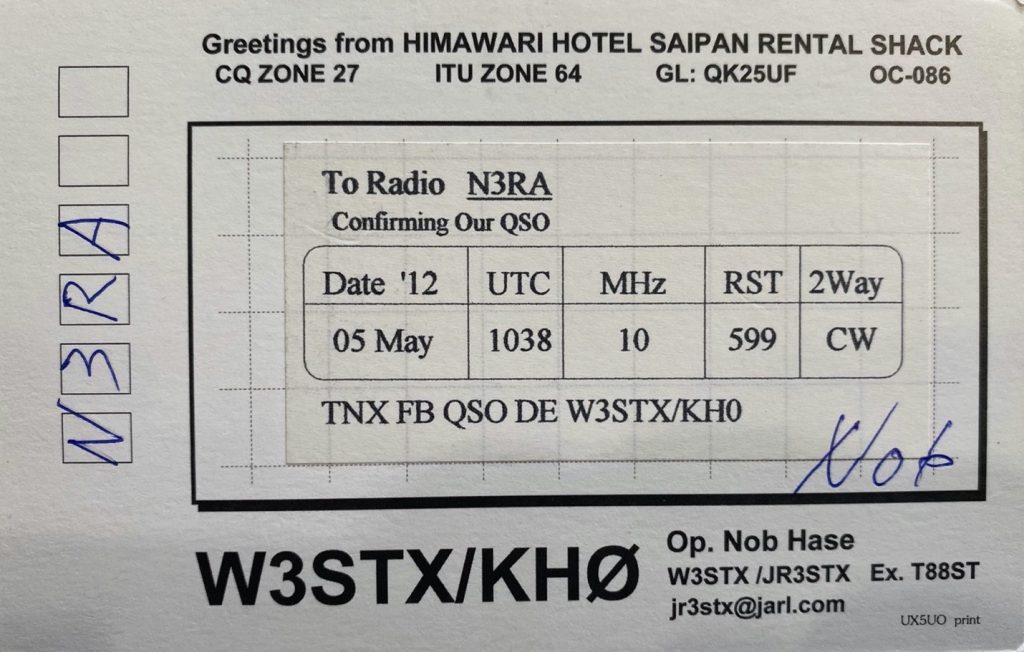
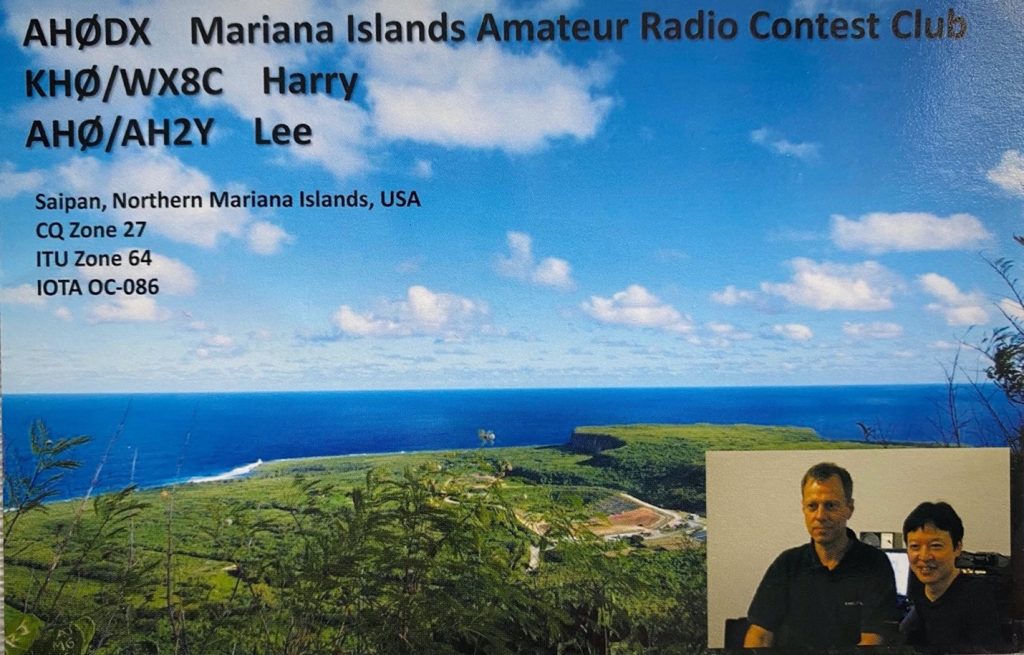
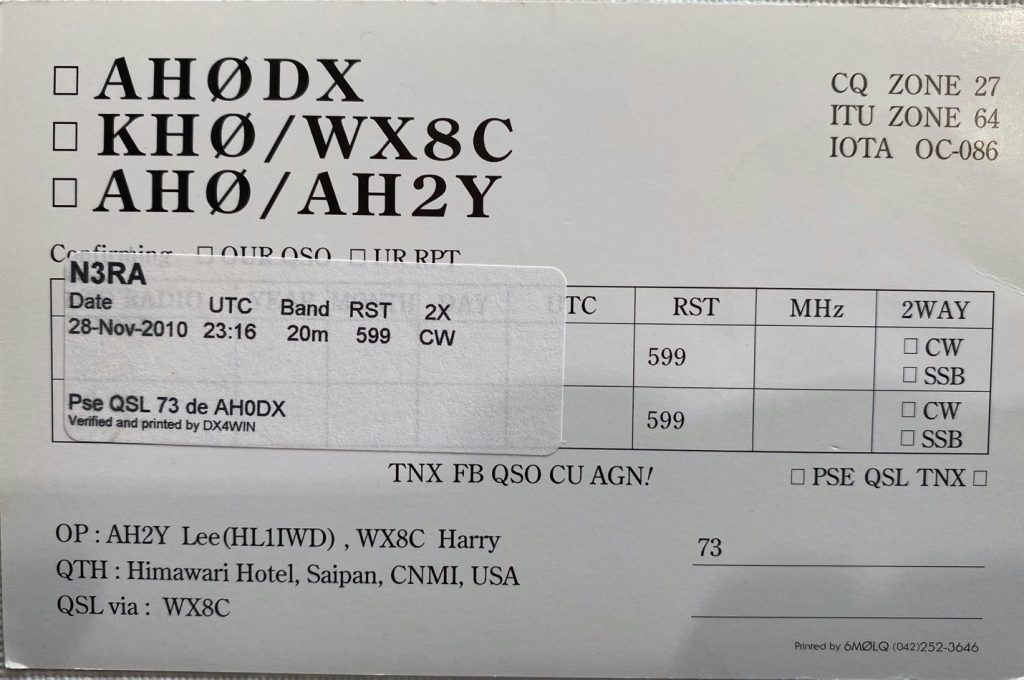
Dave, K8DV, DX Engineering customer/technical support specialist, reached KC6SX from Saipan Island in October 1979 on 10M CW, and AH0V from Saipan I in January 2008 on 40M CW.
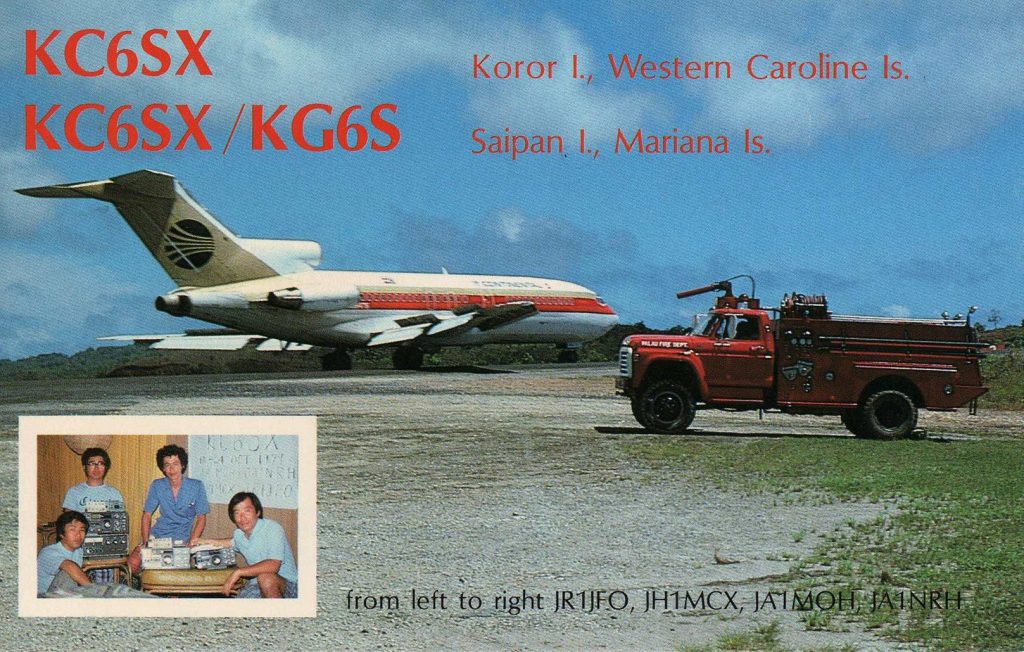
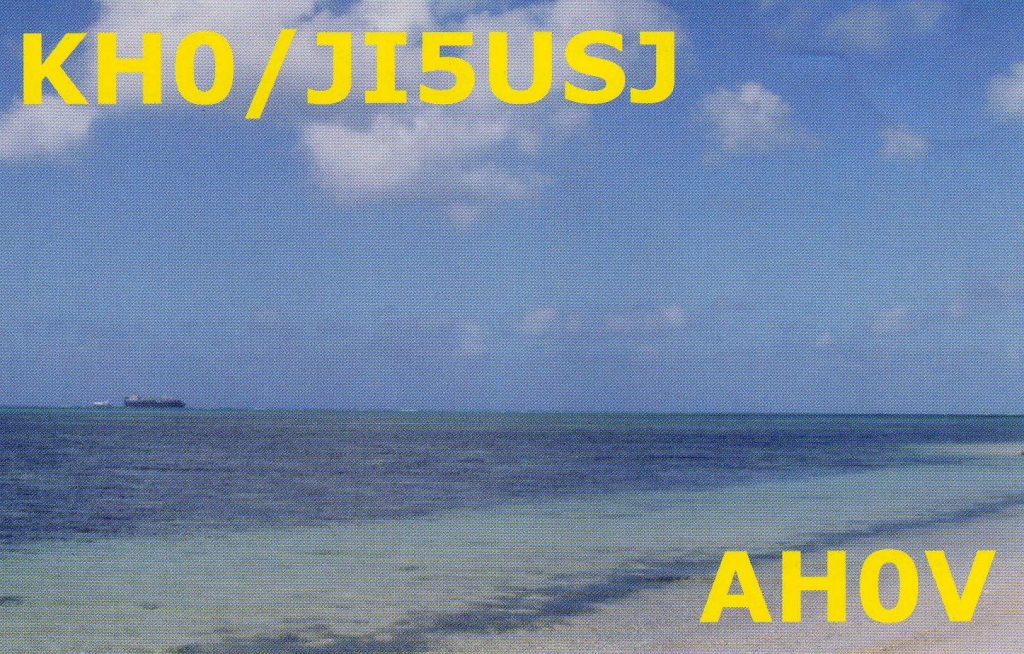
Wayne, K8FF, DX Engineering customer/technical support specialist, reached W6STT/WH0 in March 2001.
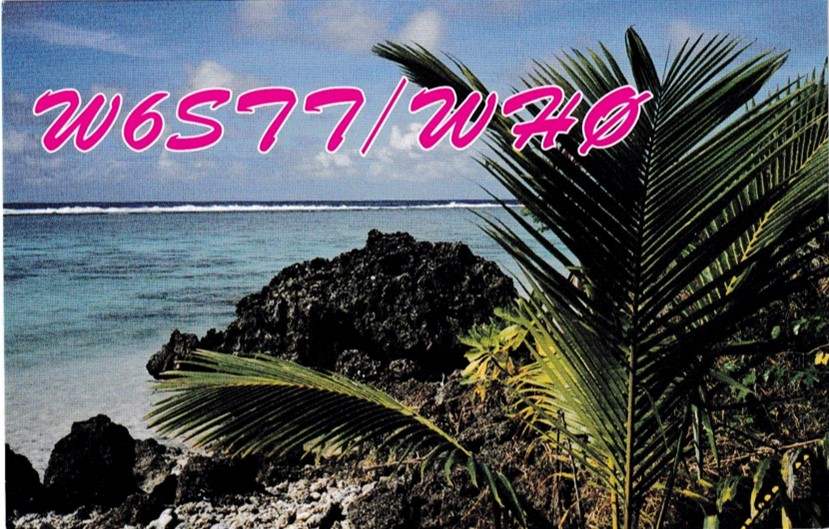
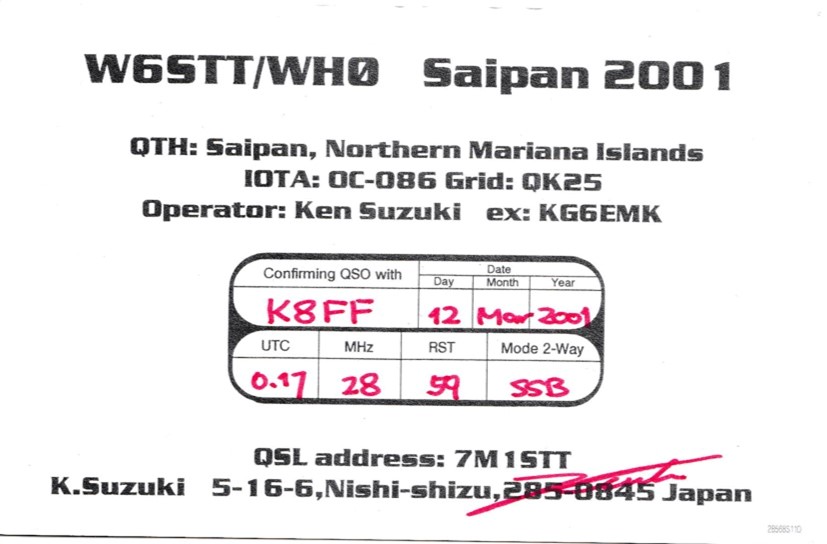
Note: Later this month we’ll be featuring QSL cards from Benin. The multi-operator TY0RU Benin DXpedition is scheduled to be active from October 14-26 on 160-6M in CW, SSB, and FT8.
Want to upgrade your DXing capabilities? The Elmers at DX Engineering are here to lend an ear. Reach out to them at Elmer@DXEngineering.com. Find everything you need at DXEngineering.com to up your game, including transceivers, antennas, amplifiers, headsets, and more.

